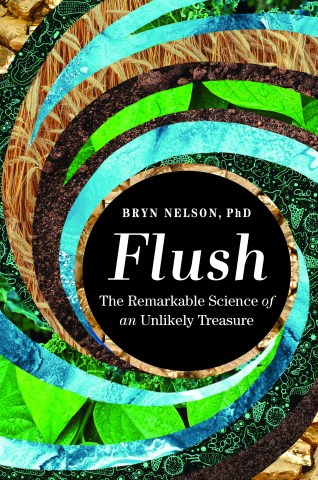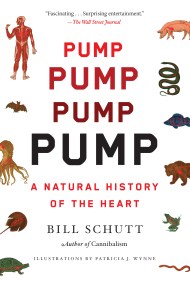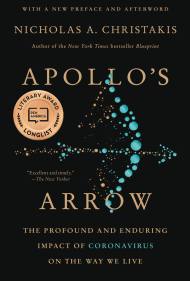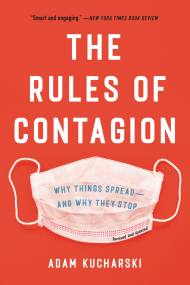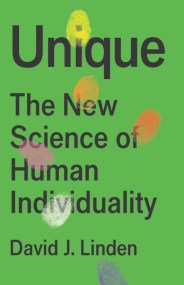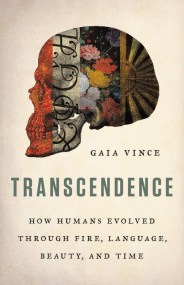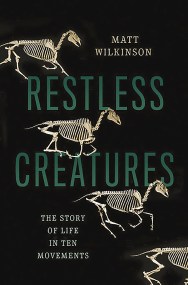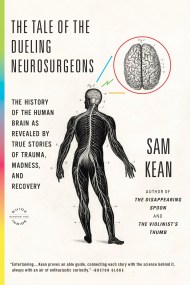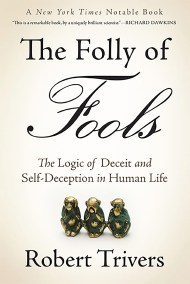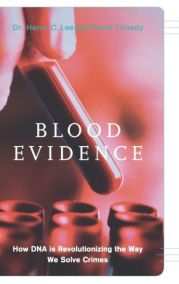Shopping Cart
Flush
The Remarkable Science of an Unlikely Treasure
Description
The future is sh*t: the literal kind. For most of human history we’ve been, well, disinclined to take a closer look at our body’s natural product—the complex antihero of this story—save for gleaning some prophecy of our own health. But if we were to take more than a passing look at our poop, we would spy a veritable cornucopia of possibilities. We would see potent medicine, sustainable power, and natural fertilizer to restore the world’s depleted lands. We would spy a time capsule of evidence for understanding past lives and murderous ends. We would glimpse effective ways of measuring and improving human health from the cradle to the grave, early warnings of community outbreaks like Covid-19, and new means of identifying environmental harm—and then reversing it.
Flush is both an urgent exploration of the world’s single most squandered natural resource, and a cri de coeur (or cri de colon?) for the vast, hidden value in our “waste.” Award-winning journalist and microbiologist Bryn Nelson, PhD, leads readers through the colon and beyond with infectious enthusiasm, helping to usher in a necessary mental shift that could restore our balance with the rest of the planet and save us from ourselves. Unlocking poop’s enormous potential will require us to overcome our shame and disgust and embrace our role as the producers and architects of a more circular economy in which lowly byproducts become our species’ salvation. Locked within you is a medicine cabinet, a biogas pipeline, a glass of drinking water, a mound of fuel briquettes; it’s time to open the doors (carefully!). A dose of medicine, a glass of water, a gallon of rocket fuel, an acre of soil: sometimes hope arrives in surprising packages.
What's Inside
CHAPTER FIVE
PORTENT
It was a condition once considered so gruesome, so fearsome, and so universal in Western countries that doctors dubbed it the "disease of all diseases" and "the cause of all the hideous sequence of maladies peculiar to civilization." Without the proper precautions, medics warned, people's innards could be poisoned, "depraved," or "deranged and corrupted." Behold the awesome power of constipation.
As the medical historian James Whorton found, the horrors of irregularity can be traced as far back as a description in an Egyptian papyrus book of pharmaceuticals from the sixteenth century BCE. The ancient Egyptians believed that rotting intestinal waste could poison the rest of the body—a concept of “autointoxication” that persisted for 3,500 years (and still figures in some ads). In the late nineteenth century, a French physician declared that a constipated person “is always working toward his own destruction; he makes continual attempts at suicide by intoxication.”
The fearmongering did wonders for sales of constipation cure-alls such as abdominal massagers, enemas, chocolate-coated laxatives, and bran cereals with names like DinaMite. Whorton’s historical research even unearthed a 1938 ad for Dr. Young’s Ideal Rectal Dilators, conveniently sold as a set of four progressively larger flanged torpedoes. They may have indeed stretched or dilated the inner and outer sphincter muscles and caused “some momentary pain or thrill” but were basically indistinguishable from sex toys known as butt plugs.
These cure-alls and contraptions had a darker side. After its introduction in 1900, a compound called phenolphthalein skyrocketed in popularity and became the top-selling laxative in the United States “on the strength of its marketing campaign to rescue innocent children from the clutches of autointoxication,” according to Whorton. Overuse of laxatives in general can decrease the absorption of nutrients and other medications, cause electrolyte imbalances, create dependency, and actually worsen the constipation by interfering with the colon’s natural contractions. Some consumers have even used phenolphthalein and other laxatives as dangerously ill-advised weight loss pills. Nearly a hundred years after its debut, studies linked phenolphthalein to multiple carcinogenic effects in rats and the US FDA reclassified the drug as “not generally recognized as safe and effective,” prompting manufacturers to remove it from their laxative formulations. Although the carcinogenic risk hasn’t been confirmed in humans, separate studies have suggested that the chemical can damage DNA. Multiple countries have banned its use in over-the-counter products, but phenolphthalein is still one of the most common drugs found in adulterated dietary supplements.
Our desire to read the undigested tea leaves, to seek clues about our own mortality floating in a toilet bowl, is something that charlatans have taken advantage of since the dawn of human history. Part of the problem is that we don’t have a stellar record when it comes to interpreting true signs of trouble. As we’ve learned, for instance, the ubiquity of intestinal parasites in the poop of our predecessors likely signaled poor public sanitation and personal hygiene. But at the time, as paleo-pathologist Piers Mitchell recounts in his history of human parasites in the Roman Empire, many medical practitioners were heavily influenced by the philosophy of Greek physician Hippocrates. The good doctor asserted that disease, including intestinal worms, could be triggered by an imbalance among the four “humors” of black bile, yellow bile, blood, and phlegm, or a corruption of any one of them. Hippocrates at least intuited the importance of maintaining an inner equilibrium if not the identities of what required balancing.
Aelius Galenus, the Greek physician for three Roman emperors, built upon Hippocrates’ humoral ideas in crafting his own explanation and cures for intestinal helminths. The parasitic worms, he believed, formed through spontaneous generation in putrefied matter as it heated up. To return the humors to their proper balance and presumably deworm his patients, Galenus recommended that they undergo treatments such as diet modification, bloodletting, and medicines thought to have a cooling and drying effect on the body. All told, Mitchell said, the beliefs of Hippocrates and Galenus on the origin and treatment of intestinal parasites remained accepted wisdom in Europe and the Middle East for about 2,000 years, until the time of the Renaissance and the Enlightenment.
Dubious ideas about disease and bodily functions hardly ended there. As Steven Johnson’s book The Ghost Map documented, Victorian London in the mid-1800s was rife with ads for quack cholera remedies— some touting disinfectants that promised to lift the foul miasma widely assumed to cause the deadly diarrhea, others hawking opium to ease upset stomachs, or mixtures with linseed oil or castor oil or brandy, when simple rehydration with clean water and electrolytes would have saved thousands of lives. During the COVID-19 epidemic, remarkably similar and dangerous claims and hoaxes proliferated on the Internet, touting everything from bleach, industrial methanol, and hydrogen per- oxide to the horse dewormer ivermectin, urine, and cocaine as miracle cures or preventatives.
Social media may have replaced the sandwich boards and newspaper ads, but our feces have fueled a similar cottage industry of products that promise easy answers about how we’re doing or clear signs that an at-home analysis or cleanser or “detox” is aiding our health. For every sensible and reasonably informative fecal test or chart or word of advice, there are countless extravagant claims reminiscent of the Victorian era’s constipation cure-alls. “Quickly drop that extra 5+ lbs of toxic poop in your colon,” an ad for the $29.95 zuPOO cleanser promised me. For $195, The 10-Day Reset by Sakara would send me a beautifully packaged DIY detox box of tea, powder, bars, probiotics, recipes, and separate “Beauty Water Drops” and “Detox Water Drops” that could do everything from clear my skin to heal my gut and restore “digestive harmony.” Companies like Goop have made big businesses out of products that promise to restore inner body parts with words like scrub and cleanse and detoxify and rejuvenate. Nor has Silicon Valley been immune from the hype. Once-lauded gut microbiome–testing company uBiome filed for bankruptcy in 2019 and federal prosecutors charged its two cofounders with more than forty counts of health care, securities, and wire fraud in 2021. Among the allegations, prosecutors charged that the company deceived investors and health care and insurance providers about poop-based tests that were “not validated and not medically necessary.”
The seductive siren songs of quick fixes may ring loudly in the ears of anxious and sleep-deprived parents. Baby poop, after all, can be a visceral and frightening force of nature, beginning with the greenish-black meconium. When a baby jumps the gun and poops while still in utero and then inhales the sticky fecal matter, meconium aspiration syndrome can cause serious respiratory distress. And just like that, a dark green staining of amniotic fluid or of a baby’s vocal cords as seen through a laryngoscope can provide one of the first warning signs in a newborn’s life. A bewildering palette of fecal consistencies and colors often follows. “Sleep training? Vaccines? Forget it. The most important parenting decisions and signals involve poo,” write Anish Sheth and Josh Richman in What’s Your Baby’s Poo Telling You?—the cheeky follow-up to their original owner’s manual, What’s Your Poo Telling You? “Poop got a lot more interesting when I had kids,” one mother told me. Before children, she said, she never envisioned the animated daily discussions she and her husband now have about it (my husband, Geoff, and I have similar in-depth conversations about our dog’s output: Did she poop on her walk? Really, that much? Did it look OK?). Nor would she have thought herself capable of fretting over the fresh contents of a training potty—wondering if she was looking at evidence of functional constipation—and never once pausing to dry heave.
As we’ve seen with disgust, love can truly transform our senses—if not always our sense. To protect ourselves from manipulation, we’ll need a better understanding of what poop can really tell us, and what we can realistically do about it. From a scientific standpoint, we’re in an exciting moment of renaissance and reassessment: what we thought was a pretty simple substance is anything but. Every stool can deliver a blizzard of signals from birth to death. The catch, of course, is decoding the true messages amid the noise and knowing whether and when they demand action. Some of the signs we can clearly sense on our own. Some of them require more careful scrutiny, like a doctor’s eye, a dog’s nose, or a machine’s measurements. And some of them are just emerging as intriguing possibilities of what scientific sleuths might predict and prevent by carefully piecing together complicated patterns. As I dis- covered about my own output, we still have plenty to learn about the lifelong companion we thought we knew.
• • •
In a toilet or diaper, even basic colors can be telling. Poop that is frequently yellow and greasy could suggest that you’re not digesting fat well and that an evaluation for celiac disease or another cause of the malabsorption is warranted. A green stool could indicate that food is passing through your colon too quickly and not giving your bile a chance to break down into its more familiar brown coloring (unless you happened to eat a black-bun Halloween Whopper during Burger King’s 2015 promotion fiasco, in which case everything likely came out the same color as the Chicago River on St. Patrick’s Day). A black stool could indicate bleeding in the upper gastrointestinal tract or a recent snack of black licorice, while a red stool might mean you ate beets or are bleeding in the lower tract—often from hemorrhoids but sometimes due to a more serious problem such as colon cancer. A white or clay-colored stool, devoid of the coloring that normally comes from bile, may suggest a blockage in a duct that ferries bile from the liver to the gallbladder (in infants, this blockage is known as biliary atresia and can be life threatening if not corrected). Mercifully, my poop is a normal if boring variation on the color brown.
Given the notoriously colorful hues of baby poop, it may comfort parents to know that many pediatric gastroenterologists have a simple rule: after the meconium, basically every shade is normal except for black, red, or white. Pediatricians have even created their own color scales and at least one smartphone app to help assess whether a photographed diaper deposit looks abnormal and warrants a follow-up. A small pilot study suggested that the snap-and-share method was accurate, though the closeup photos made me thankful that I wasn’t there for the real thing.
Then there’s the matter of form. On one of his many Oprah appearances before going on to host his own show, cardiac surgeon and purveyor of often questionable medical advice Mehmet Oz told the studio audience that paying attention to our bowel movements could provide a good indication of proper diet and digestion. While gastroenterologists say this is certainly true, Oz had a very specific kind of movement in mind. “You want to hear what the stool, the poop, sounds like when it hits the water. If it sounds like a bombardier, you know, ‘Plop, plop, plop,’ that’s not right because it means you’re constipated. It means the food is too hard by the time it comes out. It should hit the water like a diver from Acapulco hits the water: swoosh.” Also, the perfect poop should be shaped like an S and be brown with just a hint of gold, Oz said. (So maybe bronze?) Not in pieces, he said, which suggests that “you don’t have enough of it left to poop out in the right way and probably it’s hurt the colon that has to process it.” Also, we should fart more, he asserted. I’m a big believer in having goals, though I confess that delivering the perfectly bronzed and fully intact swooshing S and letting loose with more regularity were not things that I had aspired to as the paradigms of intestinal health. Nor are they terribly realistic, for that matter, given that the shapes and sizes of our output can vary from day to day. It is true, however, that the first toot and plop after a medical procedure can herald a return to normal business, as I found after my gallbladder surgery.
Oz may envision stools as graceful divers or bombing runs, but one of the easiest and most common ways to track poop over time is a visual chart that interprets a range of seven fecal forms. Devised by the UK’s Bristol Royal Infirmary in 1997, the Bristol stool scale uses shapes and consistencies as proxies for how long it takes food to pass through our guts. The chart is now a mainstay of surgical offices, many with their own flourishes to help patients identify their stool types. Much like imagining shapes in the puffy clouds on a summer day, for instance, Stanford Medicine’s Pediatric General Surgery Department has helpfully likened each type to a familiar form. Under the banner “choose your POO!” the shapes range from rabbit droppings and a bunch of grapes (suggestive of constipation) to corn on the cob and sausage (“ideal”), to chicken nug- gets (trending toward diarrhea), to porridge and gravy (diarrhea). The idea is to aim for the corn-and-sausage middle and avoid the extremes. At the constipation end of the scale, the colon can absorb too much water, resulting in infrequent or uncomfortable bowel movements despite considerable effort. The common condition, which impacts an estimated 16 percent of American adults, has so many potential causes that researchers are still hotly debating how to define and classify it. Fifteen major classes of drugs can cause constipation, according to one comprehensive tally. Even Tylenol can stop things up.
At the opposite end of the scale, multiple drugs can cause diarrhea by increasing the intestinal muscle movements that push everything onward. Allergies, infections, and contaminated or overly spicy food can likewise trigger a defense mechanism in which the body speeds the transit through the intestinal tract and tries to rid itself of the perceived danger as fast as possible. Diarrhea can be a consequence of conditions like irritable bowel syndrome and lactose intolerance. Diseases, drugs, or damage can inflame or tear the intestinal lining, interfering with water absorption and provoking a massive immune response that can make matters worse. In some cases, the colon doesn’t have enough time to absorb water from undigested food and by-products. In others, like during a cholera infection, more water pours into the intestinal canal from surrounding cells. Either way, the colon can essentially turn into a flume and flush out the poop.
Given the multiple constipation-inducing pain and antinausea drugs stacked against my colon’s post-surgery conveyor belt, it’s remarkable that the first clump of grapes found its way out after little more than two days. Soon thereafter, I proudly produced a smooth sausage on the Goldilocks scale of just-right poops (though not, sadly, a perfectly swooshing diver), before sailing well into the realm of chicken nuggets and definitely not-right porridge. The overshoot may have reflected the residual effects of my multiple other diarrhea-promoting medications.
Although the Bristol stool scale is the go-to standard for distinguishing among ideal and less-ideal forms, some scientists have questioned its reliability and argued that clocking the gut transit time provides a more useful indicator of health and microbiome function. Remember my sesame seed and corn kernel transit tests? Scientists funded by a health science company called ZOE used blue-dyed muffins as their own visual marker to measure the gut transit times of 863 healthy volunteers. Their study, “Blue Poo: Impact of Gut Transit Time on the Gut Microbiome Using a Novel Marker,” suggested that royal blue dye works just as well as expensive tracking options like wireless smart pills. For the participants, they calculated a median transit time of roughly twenty-nine hours but observed an impressive range of four hours to ten days. Although neither extreme is ideal, nutrition scientist Sarah Berry told me the range reflects the surprising variability that she and her colleagues have seen in a larger set of studies investigating how people respond to meals.
Most study participants had a gut transit time between fourteen and fifty-eight hours (my independent tests suggest that I fall into this group as well). For those with longer times, the study found a clearer association with higher levels of visceral fat and post-meal spikes in blood sugar and circulating fat, which are independent risk factors for cardiovascular disease. In a seemingly counterintuitive result, the study found that those longer transits were also associated with greater gut bacterial diversity. The potential exception to the rule that more diversity is better may be explained by the increased availability of bacterial food in this case: the more time it takes for a meal to pass through the colon, Berry said, the more time microbes have to feast on the remainders, allowing some to bloom at the expense of others. A particularly long journey through the gut, in other words, may add nuance to the desirability of microbial diversity and another variable to the list of microbiome influences. “If the diversity includes a greater diversity of unfavorable microbiome microbes, then that’s not necessarily a good thing,” Berry said.
For the diaper-wearing set, scales developed in Amsterdam and Brussels have provided other alternatives for judging gut transit times based on stool forms. After studying the representative photos of baby poop, I again sympathize wholeheartedly with new parents. As the developers of the Brussels Infant and Toddler Stool Scale point out, however, reliably assessing a young child’s stool can be hugely important in evaluating recurring patterns and diagnosing gastrointestinal disorders such as functional constipation, diarrhea, and irritable bowel syndrome.
Newer methods may be more refined, but diaper divinations have been around for centuries. In his nineteenth-century Norwegian folk- tale, “The King of Ekeberg,” Peter Christen Asbjørnsen tells readers that “the enlightenment” has come to Oslo because the residents there no longer blame trolls for their youngsters’ afflictions. Instead, according to an English translation by Simon Roy Hughes, they let an insightful woman “cast metal for the child suffering from rickets, enchantments, and devilry. Or they send one of the child’s nappies to Stine Bredvolden, who is so wise that she reads the child’s sickness and fate, and thereafter determines how it will fare.” Molybdomancy, or fortune telling by drop- ping molten metal into water and interpreting the resulting shapes, is no more valid than measuring skulls or reading the retinas of murder vic- tims. Bredvolden, on the other hand, may have had her own early stool scale. And as I found out, reading the contents of a toilet bowl every day for a year did indeed provide a surprising wealth of information. The big question was whether it would make any difference in improving my health and well-being.
• • •
Some people might spend the day after Christmas nursing hangovers and puzzling over a new smartphone or a thousand pieces of the Eiffel Tower on the dining room table. I spent the day nursing a hangover and admiring scenes of torture in my new Hieronymus Bosch art book. Then I got to work upgrading two poop-tracking apps and assembling a bam- boo Squatty Potty. The stool wasn’t a Christmas gift, strictly speaking, but it seemed appropriate to give it a whirl after a night of beef Welling- ton, champagne, and steamed cranberry pudding. I had already been using three tracking apps for much of December, beginning my journey of personal revelations, and felt it was time to take my daily routine to the next level: exactly seven inches off the bathroom floor.
The Squatty Potty, Internet famous for its memorable commercial of a squatting unicorn filling cones with soft-serve rainbow ice cream (“the creamy poop of a mystic unicorn”), is a glorified footstool designed to help people achieve a more natural squatting angle: technically, the anorectal angle. Squatting, the idea goes, allows for a fuller evacuation of the bowels than sitting at chair height because it relaxes a muscle called the puborectalis that loops around and constricts the lower intestinal tract like a kinked garden hose. Relaxing the muscle and increasing the anorectal angle helps unkink the rectum and produce a more natural, well, stool.
This is important because working too hard to produce a few rabbit droppings or grapes can be bad for our health. Toilet seats and benches have been around since antiquity, but most people in Western countries still squatted to relieve themselves until the nineteenth century’s seated water closets began prioritizing comfort, privacy, and convenience over functionality. That design flaw, critics contend, may have contributed to several unintentional side effects related to the strain of defecating. Forceful exertion during a bowel movement, for instance, can tear the main intestinal lining and cause anal fissures. Diverticula, or marble-size pouches where the gut tissue bulges outward due to intense pressure on the colon, can likewise tear and cause diverticulitis if the damaged tissue becomes inflamed or infected. And hemorrhoids, which can pop up around the lower rectum and anus and are akin to varicose veins, can be caused by excessive straining or prolonged sitting on the pot. As we’ve heard, frequently bearing down to get everything out, one hallmark of constipation, can lead to more serious conditions like defecation syncope—fainting on the john—or stroke. Poor Elvis.
Squatting isn’t necessarily a cure-all; one study in India suggested that it, too, can increase blood pressure, and considerable disagreement persists over whether it can prevent or alleviate constipation and hemorrhoids. But the few investigations of its merits suggest that outspoken advocates like the German writer and physician Giulia Enders may be onto something. In one small but detailed Japanese study, researchers filled the anus and rectum of six volunteers with a liquid contrast dye. Then they measured the abdominal, rectal, and anal sphincter pressures and filmed the volunteers as they passed the poop substitute in three positions (yes, the volunteers had to be refilled each time). Greater hip flexing in the squatting position, the scientists found, widened the anorectal angle and led to less straining while defecating. In 2019, gastroenterologists at the Ohio State University recruited fifty-two volunteers to test out what they termed a defecation posture modification device (clearly missing an opportunity to call it a defecation modifying- posture device, or DMPD). Anyway, the study found that the device, basically a stool, did indeed speed up self-reported bowel movements, decrease strain, and encourage more complete evacuation.
The toilet seats in our house reach a regal height of 17½ inches— great for sitting on the throne but apparently less great for efficiently conducting one’s business from on high. My art books or old science textbooks would have done in a pinch for adjusting my angle, but I decided the time was right to see whether I could improve my form with the Squatty Potty. It might spoil the suspense to confess that I didn’t notice a big change the first few times I used it, with neither a creamier nor a swooshier delivery. But I had already learned that I wasn’t having much trouble depositing the goods, as my smartphone apps helpfully charted.
Tracking the frequency, speed, quantity, consistency, and color of every bowel movement outside of a research investigation or art installation might seem like a kind of torture that would have delighted Bosch. But the three competing apps I downloaded operate under the guiding principle that poop knowledge is power, at least for understanding normal patterns and identifying potentially worrisome trends. So I used all three to track my daily bowel movements. Let the Danes have their Crap Morning. I had a full Crap Year.
The default screen of one app is a monthly calendar with tiny icons based on the representative poop of the day. For my start date of Decem- ber 9, a single vertical “smooth and soft sausage” icon appeared above the numeral 9, forming a sort of exclamation point that suggested every stool would be special. Two apps let me snap photos of each output and even send them to friends—though perhaps they had doctors more in mind. Based on my subjective Bristol stool scale classifications, one of the apps then rated each deposit as GOOD in green or BAD in red—a sort of Tinder for ordure. The third app has a running timer since the “Last Plop,” helpful background information, a “Plop Analyzer,” and a full page of statistics. Under a “What can I do?” header on the analyzer page, it had already reached a verdict after my first entry: “You are doing great. Please keep up the good work.” At the age of fifty, I had received a gold star for pooping.
Amusing, yes, but also surprisingly revealing. Over twelve months and 996 plops, I learned that I typically go two to three times a day— on the high end of average. I never missed a day and went more in the spring, less in the summer and fall, mainly in the morning, and almost always between 8:00 a.m. and 6:00 p.m. when I wasn’t traveling or stay- ing up late to write. My tracking confirmed that the first coffee of the morning was nearly guaranteed to get things moving. That makes sense in light of studies like one in which University of Iowa researchers somehow convinced a dozen healthy volunteers to undergo a tap water enema and then be outfitted with a flexible probe taped to their buttocks and inserted about two feet into the colon for more than eighteen hours. The probe, equipped with six pressure sensors, was designed to objectively measure the strength and coordination of the volunteers’ colon muscle contractions. The wave of contractions and relaxations, or peristalsis, provides the gastric motility that moves food through the intestinal tract. After an overnight stay, the volunteers drank a cup of black coffee, decaffeinated coffee, and hot water in random order, arranged around a large (and relatively unhealthy) lunch. Black coffee not only stimulated the colon’s motor activity but also nearly equaled the lunch’s effect in propagating muscle contractions toward the exit doors, though for only about half as long. The coffee, in turn, revved the colon’s motor 23 percent more than its decaffeinated counterpart and 60 percent more than the water.
It turns out that a cup of java can kindle “a compelling need to defecate” in roughly three out of every ten drinkers, at least according to one small study. Caffeine may not prompt that call of nature, though, given the multiple lines of evidence that decaffeinated coffee can also propagate intestinal contractions. Instead, researchers suspect that the highly complex brew may act indirectly through an increase in gut-brain signals or motility-promoting hormones like gastrin, motilin, and cholecystokinin.
My daily tracking showed that my peristaltic motor revved even more during a trip to Mexico and less when I visited my parents in Minnesota, and that a week of looser stools coincided with a trip to the Ore- gon Coast. Each time, though, the patterns reverted to normal when I returned home. Thankfully, I used the gravy icon only once and the porridge one sparingly. But the relative abundance of chicken nuggets populating my apps’ monthly calendars suggested that I needed more fiber to firm up my output.
I already had a bottle of Metamucil on hand that a friend had given me for my fiftieth birthday. Because of course he did. As its fiber of choice, the old standby uses seed husks from the blond psyllium plant, Plantago ovata. The plant, incidentally, has been used medicinally for centuries; today’s brands have merely repackaged that traditional knowledge in a modern form. Because psyllium husk is highly water-absorbent, it can add more bulk to stools and help regulate their transit times. The increased mass can aid constipation by stimulating more movement while also aiding diarrhea by slowing down the race through the colon and reducing the overall number of bowel movements. My initial week on Metamucil did seem to regulate my frequency and consistency. Taking two pills per day, unfortunately, was apparently too much too soon for my delicate plumbing. I was downright uncomfortable, with gas, bloating, and intestinal cramps, so I temporarily shelved the gut hack until I could chart a friendlier course.
The science suggests that my symptoms may have derived in part from the absence of existing gut microbes that could digest the fiber’s complex carbohydrates. For those who lack the right fiber-munching microbes, fermentation expert Robert Hutkins told me, easing into a higher-fiber diet may help their bodies acclimate by recruiting more of the necessary bacterial colonies. In essence, the slow but steady increase can “train” the microbiota into adapting accordingly. Recruiting enough microbes can take a while, he said, and may require adding more fiber- digesting specialists like those in yogurts and other fermented foods.
Computational biologist Lawrence David said the necessary bacteria could be there all along, but just in low numbers that need time to build up. Some of his newer data suggest another possibility: the right bacteria just haven’t had a reason to activate the right fiber-processing genes or metabolic pathways until it’s there for the taking. “When you give people fiber, or you do this in an artificial gut, you see that the bacteria there don’t really degrade it as much as if you give it to them the next day,” he said. The second time around, the microbes seem to adapt to the new food and break it down much more avidly.
Beyond feeding our curiosity about how the body works and providing lively anecdotes for cocktail parties, experiments that test how the intestinal tract responds to inputs like coffee and fiber can be critical for understanding and controlling conditions that alter our output, such as too-slow constipation and too-fast diarrhea. Coffee, after all, is one of the most popular beverages in the world. Although it may aid the constipated, studies like the University of Iowa experiments suggest that even decaf may be less advisable for people with chronic diarrhea or fecal incontinence.
• • •
Just as coffee’s complex brew of chemical compounds give it an immediately recognizable aroma, odor is another unmistakable attribute of poop. It’s also a useful indicator: particularly foul emanations can signal poor digestion or nutrient absorption and warn of motility disorders like irritable bowel syndrome or other conditions like celiac disease, Crohn’s disease, and pancreatitis. Because gut microbes play such a big role in dictating which volatile organic compounds we release, it makes sense that changes in the microbiome might alter the chemical signature of someone’s feces. That shift, in fact, may explain the ability of researchers to use fecal VOCs to differentiate among infectious diseases, and the ability of detection dogs to sniff out signs of intestinal C. diff infections in patients, stool samples, and surfaces in some hospitals.
In Amsterdam, a beagle named Cliff—billed in 2012 as the first bacteria-detecting dog in the world—accurately identified C. diff cases by sniffing patients in the wards of two hospitals. When he detected a case of diarrhea caused by the pathogen, Cliff would quietly sit down by the patient’s bed. (The researchers considered using detection rats as well but concluded that dogs would be easier to train and more acceptable to patients and staff.) Teresa Zurberg, the Canadian dog handler honored at the Peggy Lillis Foundation gala, trained her dog Angus to identify the bacterial pathogen’s odor from pure cultures and C. diff– positive fecal samples. A 2017 study suggested that Angus likewise did exceedingly well in detecting known positives and in avoiding false alarms during a trial of his detection abilities. In a clinical unit of Vancouver General Hospital, the dog alerted staff to potential C. diff contamination of equipment and surfaces more than eighty times.
A more recent trial at Toronto’s Michael Garron Hospital comparing the C. diff–sniffing abilities of two detection dogs—a German shepherd named Piper and a border collie-pointer mix named Chase—yielded more disappointing results. The variability between Chase’s and Pip- er’s detection capabilities and a lack of agreement on some positive and negative identifications, the study authors suggested, raised questions about the reliability of detection dogs as “point of care” diagnosticians. That doesn’t necessarily mean the dogs weren’t able to pick out the distinctive odor of a C. diff infection, though. Variable performance in detection work can be influenced by distractions or a lack of motivation: in this case, Chase seemed to have “moved on,” lead author Mau- reen Taylor told STAT, and was easily distracted by breakfast trays on patients’ beds. “The dogs found it hard to pass a toilet without drinking out of it,” Taylor also noted.
Detection dogs may be imperfect sleuths for medical forensics, but their potential is vast. As medical aides, Cynthia Otto’s team at the University of Pennsylvania has shown that they can identify ovarian cancer through a unique odor in the blood plasma of patients. Similar detection work has focused on bacterial biofilm infections of prosthetic implants. And in 2020, Otto’s center launched a new project to determine whether dogs could detect the presence of prions—the infectious proteins linked to chronic wasting disease—in deer feces. In a subsequent study, she and her colleagues reported that the center’s dogs could detect signs of COVID-19 in patients’ urine, sweat, and saliva samples.
“Diseases cause definite changes in our odor and it’s just a matter of training on the proper odor through the samples,” she told me. In fact, Otto views the progress in dog detection research as a re-visitation of an age-old concept. “I mean, if you look back in ancient Greece, they talked about the smells associated with different diseases,” she said. Hippo- crates, for one, suggested the diagnostic utility of body odors and wrote about disease-specific smells in urine and saliva. Modern humans, by contrast, have largely left that sense behind as we rely on other cues. If we slow down and refocus, “we might start to retrain our noses,” Otto said. In the meantime, we can rely on our canine companions or try to extract the knowledge embedded in the odors they detect.
Though dogs can still clobber machines in the sniffing department, most hospital and clinical labs can clue in on an impressive range of other fecal constituents. For some patients with diarrhea, white blood cells in the stool can warn of bacterial infections or inflammatory bowel disease. Another common test, a gastrointestinal pathogen panel, can detect the DNA or RNA of more than twenty bacterial, viral, and parasitic disease-causing organisms to help narrow down a diagnosis.
Because it begins forming in the second trimester, even a baby’s meconium can act as a kind of medical archive. Once expelled by a new-born, the substance can be tested for the breakdown products of drugs to determine whether the mother used them during the final four or five months of pregnancy. Salt Lake City–based ARUP Laboratories, for instance, offers the service for opioids, cocaine, marijuana, and six other drug types. There are clear medical advantages to knowing what a baby might have been exposed to in utero. But perhaps sensing the creepy law enforcement implications of using babies to drug test their mothers, the lab states that its method is intended for medical purposes only and isn’t valid for forensic use.
Feces can chronicle the body’s attempt to rid itself of heavy metals as well. In India, scientists measured the concentration of toxic metals in the fecal pellets of blue rock pigeons to monitor the pollution at six industrial areas in the city of Jaipur. And in Zambia, scientists reported detecting “extremely high” levels of lead and elevated levels of cadmium in the feces and urine of infants and toddlers living in polluted townships near a lead and zinc mine. Although blood and urine tests are more often used for such biomonitoring, the research suggested that fecal samples can also work well for public health surveillance of poisoning from lead and other metals.
Multiple commercial labs, in fact, offer stool tests that can measure the levels of lead and more than a dozen other metals. But there’s a downside, particularly with direct-to-consumer testing services that are charging worried families hundreds of dollars to test their poop. “This fecal metals test reveals how many metals are moving through you and out of you,” an option by a company called Life Extension claims, though it comes with the disclaimer that the laboratory services are “for informational purposes only” since they haven’t been licensed by the FDA to provide medical advice. Sidestepping the involvement of a doctor puts the onus on concerned consumers who may overestimate their true risk, receive unreliable results, or not know what to do with them.
Most at-home tests, including ones mailed back to a lab for processing, aren’t regulated by the FDA. Some of the ones that are, though, have become integral to public health strategies for HIV and other sexually transmitted infections, hepatitis C, colon cancer, and COVID-19, among other diseases. Driven by privacy and convenience—and in 2020, by limited access to other options during the pandemic—they have soared in popularity. From mid-March to mid-April in 2020, testing company LetsGetChecked reported a 477 percent increase in demand for its at-home colon cancer screening test. It’s just one of many that look for faint signs of blood in the stool—technically, “fecal occult blood”—as a potential indicator of tumors or polyps. “Occult blood” may sound like it belongs in a mystical pagan ritual that may or may not involve a goat, but in reality, gathering my own stool sample for a $49 kit sold by health testing company Everlywell was more like a preschool art project. Using a long-handled blue brush, I dabbed at my poop for five seconds, shook off the excess, and then painted a small square on the collection card. Then I repeated the process with a second brush and a second square, creating two miniature abstract watercolors. This fecal immunochemical test, or FIT, detects blood through the presence of hemoglobin, the major oxygen-carrying protein in red blood cells.
Everlywell, dubbed “the Uber of lab testing” by public health reporter Kim Krisberg, sells convenience in exchange for the chance at repeat business. On that promise, at least, it delivered: I returned the test on a Friday and had my result the following Tuesday: negative (a positive result would have prompted a discussion with my doctor about whether another colonoscopy was necessary to determine the source of the blood). For people who live in remote communities or who have been poorly served by the deeply dysfunctional US health care system, timely lab results can be a godsend.
More sophisticated at-home tests that also look for altered DNA as a potential sign of cancer, like a prescription-only option by Cologuard, are more accurate but also an order of magnitude more expensive without insurance. Because I had already received a colonoscopy and a clean bill of health a few years prior, I chose the simpler option. The collection process was easy enough, though it could be confounded by bleeding hemorrhoids, blood in the urine, or some other gastrointestinal injury like a stomach ulcer.
There were other drawbacks. On the “My Everly” online dashboard, the company suggested that I could become a member and get a lab test every month (for $24.99), like a bouquet or book-of-the-month club but focused more on things like cholesterol and sexually transmitted infections. Nothing says Valentine’s Day quite like a chlamydia and gonorrhea test. The site also asked for personal medical history and family history information that I declined to provide, even though it would have helped to “personalize” suggestions and my experience. Er, no thanks.
More testing isn’t necessarily better, especially given that some of Everlywell’s services, like two versions of a food sensitivity panel, have been panned by some experts as gimmicks with no established medical benefits. Other hormone and vitamin deficiency tests haven’t yet proven their utility to independent assessors like the US Preventive Services Task Force. Everlywell has asserted that it never sells customer data and uses state-of-the-art security safeguards. Even so, it was a bit disconcerting to discover that a colon cancer test could be the gateway to an expensive health journey of questionable value.
My own poop, at least, likely wouldn’t trigger a national security incident if it ever fell into the wrong hands. Number two from number ones, however, has figured prominently in accusations of “espionage via excrement,” in the words of a 2016 BBC report. During the 1949 visit of Chinese communist leader Mao Zedong, or Chairman Mao, to Moscow, Soviet spies reportedly diverted the toilets in his remote guesthouse to secret containers and brought the poop to a lab for analysis. The spying plot, reportedly ordered by Soviet leader and fellow communist Joseph Stalin, may have been aimed at constructing a psychological portrait of Mao. North Korean dictator Kim Jong Un might have had that subterfuge in mind when he reportedly brought a portable toilet to a 2018 summit in Singapore. A stool analysis could have revealed a medical condition or other secrets about Kim’s health, but his elaborate security precautions “will deny determined sewer divers” insights into the supreme leader’s stools, according to The Chosun Ilbo newspaper in South Korea.
Scatological spies would no doubt be impressed by Stanford University’s memorable addition to The Internet of Things: a “smart” toilet that operates autonomously thanks to pressure and motion sensors, four cameras, and a computer interface. In addition to a color-based urinalysis, the toilet uses “deep learning” to classify all incoming deposits according to the Bristol stool scale. For bathrooms with multiple users, the toilet’s flush lever reads each person’s fingerprint and a camera that would make even airport security personnel blush matches each user to “the distinctive features of their anoderm.” That’s science-speak for “butthole print.”
Researchers reported that their automated system—far more complicated than my tracking apps—rivaled trained medical personnel in identifying disease markers. But their ideal scenario of toilet-based “precision medicine” and an app that would alert the user’s health care team to signs of trouble begs the question of whether the added complexity could contribute to false assurances or over-diagnoses. It also left me wondering whether the potential benefit really warrants the technology’s elaborate privacy and security features needed to shield someone’s anoderm or diarrhea from prying eyes. “The smart toilet is the perfect way to harness a source of data that’s typically ignored—and the user doesn’t have to do anything differently,” said one of its creators in a news release. But maybe we should do things a bit differently to avoid the potential pitfalls of outsourcing our own attentiveness to a computer algorithm.
David, the computational biologist, has adopted a more wait-and-see attitude about smart toilets. He views the inclusion of multiple measurements as all part of the experimental process and akin to what the more established field of human genomics went through during its early years. “There’s only one way to find out which of these is actually useful to people,” he said.
German engineers, ironically, created a much simpler toilet decades ago that encourages careful observation—to the horror of many US travelers. Older German toilets feature a rear “poop shelf ” above the water- line upon which the deposits rest, allowing each producer to inspect the goods before they’re whisked through a drain toward the front of the bowl (the high-and-dry platform also cuts down on excessive splashing). Benecke, the German forensic entomologist, told me it was commonly used to check for parasitic worms in feces, though that particular need has waned over time. A toilet brush is usually necessary to help clear the stools, but the Flachspüler, or flat-flush toilet, is particularly useful for first examining their shape, color, and consistency. Science comedian Vince Ebert calls it “the German platform of contemplation.”
• • •
If nothing else, being more aware of my poop set a baseline from which I more readily noticed modest deviations. My tracking adventure, though, paled in comparison with David’s odyssey when he was a graduate stu- dent at the Massachusetts Institute of Technology. He and his graduate advisor, Eric Alm, not only characterized their daily bowel movements for a full year, but also collected them along with saliva samples to con- duct a more extensive analysis. Using a reconfigured cell phone app, they tracked 349 variables ranging from the poop’s weight and odor to their diet and mood; recording all of it took about an hour every day. When it was all over, David told me, he was so sick of the routine that he swore off smartphones for years.
Combined, the two researchers collected more than ten thousand measurements of how they and their inner microbes lived. The study suggested that amid ongoing competition within the gut, most of their microbial communities remained remarkably stable for months, with a few notable exceptions. Specific disruptions like food poisoning, international travel, and dietary changes were all associated with clear shifts in gut flora. After Alm came down with a nasty bout of Salmonella food poisoning accompanied by diarrhea, for instance, his gut flora changed dramatically. Many of the stalwarts vanished. Minor constituents suddenly flourished. And some entirely new species appeared. But when the researchers took a closer look, they saw that the replacements in his gut largely replicated the functions of the former communities, like the ability to digest certain carbohydrates. Although the infection wiped out many of Alm’s bacterial species, the ecosystem seemed to rebalance itself and conserve its workflow if not its workers.
In the midst of the study, David accompanied his wife to Bangkok for fifty-one days. He went out of his way to try new foods and to this day considers his time there a culinary highlight, despite contending with diarrhea for almost one-third of his stay. To his surprise, however, his gut hadn’t adopted a new slate of microbial inhabitants. “I’d always assumed that you would pick up other bacteria from all over the world, and I didn’t really see a lot of evidence of that,” he said. Rather, some species that had been there all along but in relatively low numbers took off while other previously abundant ones receded into the background. When he returned home to Cambridge, Massachusetts, the pattern reversed itself in about two weeks.
After following David’s journey, I reasoned that if I really wanted to get to the heart of my own gut health, I should have my microbiome sequenced too. I decided to go with the Floré testing service from Sun Genomics (normally $249 but on sale for $169), in large part because it promised to tell me which microbial species were cohabitating with me instead of just providing hazier “gut health” indicators. “Get to Know Your Gut,” its ads suggested. Once I had sampled what I thought was enough poop from a collector pad and sealed the samplers in biohaz- ard bags, registered the kit, and dropped off my well-secured bundle to FedEx, Floré promptly offered me an “add-on” $99 test that measures a biomarker for inflammatory bowel disease. But there was a catch: screening the sample already in transit wouldn’t be considered a valid diagnostic test; that would require a new sampling kit for $129. Er, no thanks.
I had initially hoped to contribute my microbiome sequence data to the American Gut Project, a crowdsourced effort launched in 2012 that is comparing “in the wild” gut microbiomes from thousands of participants, predominantly in the US, the UK, and Australia. In the midst of the pandemic, though, the project’s scientists pivoted to COVID-19 research and stopped sending out regular collection kits to would-be collaborators. The project’s database isn’t all that representative of the planet’s gastrointestinal microbes: the data have been stripped of identifying details, but the researchers concede that the participating citizen- scientists are nearly all from industrialized countries and are wealthier, healthier, and more highly educated than average. Despite its limitations, the public database has amassed a diverse collection of bacterial species and gene sequences by virtue of its sheer volume, and researchers mining the data have uncovered some tantalizing trends. In 2018, a data analysis suggested that self-reported categories like “vegan,” “vegetarian,” and “omnivore” weren’t terribly predictive of participants’ gut microbiome diversity. Rather, a small subset of volunteers who reported eating more than thirty types of plants every week harbored more diversity than a comparison group who ate ten or fewer. In particular, the plant-lovers hosted more fiber-fermenting specialists such as Oscillo‑spira and Faecalibacterium prausnitzii.
David’s own analysis showed that whenever he ate fiber-rich foods, his gut microbiome shifted the next day to accommodate more fiber-digesting bacteria such as Bifidobacterium, Roseburia, and Eubacterium rectale. And whenever he ate yogurt, his microbiome harbored a greater abundance of Bifidobacteriales, the bacterial order that includes Bifidobacterium and other close relatives commonly added to yogurts as live cultures. David, now a self-described professor of “poop research” at Duke University, had already shown that putting a group of ten Americans on an entirely meat-, egg-, and cheese-based diet for five days quickly shifted their microbiome in a different direction. Their gut communities transitioned toward bacteria that were more bile-tolerant (high-fat diets release more bile acids) but less adept at metabolizing complex plant carbohydrates. Their poop samples, in turn, contained higher concentrations of deoxycholic acid, a bile acid by-product of bacterial metabolism known to promote DNA damage and liver cancer. Among its findings, the study added to evidence that high-fat diets can promote the growth of microbes that aid the development of inflammatory bowel disease.
When the same ten people ate a plant-based diet, their gut microbes shifted less dramatically but toward more fiber-degrading abilities, as David saw glimpses of from his own diet. The pronounced differences prompted by the volunteers’ temporary diets, in fact, “mirrored differences between herbivorous and carnivorous mammals.” The rapid ability of our gut microbiome to switch between the two states, David and his coauthors suggested, may reflect a key evolutionary adaptation for our ancestors, given the fluctuating availability of meat.
Today, people in the US eat about 30 to 35 percent of the fiber we should be taking in; Hutkins and other researchers routinely refer to this shortfall as the “fiber gap.” Because it has an outsized effect on poop’s weight and volume, the average deposit in Western toilets is a fraction of what it is elsewhere—another example of how “normal” isn’t necessarily the same thing as “healthy.” In 2021, microbiome researchers Erica and Justin Sonnenburg and colleagues published what they called a “stunning” new observation that suggested we might be missing something just as important. Healthy volunteers who ate a diet rich in fermented foods like yogurt, kimchi, and kombucha tea for ten weeks had significantly improved gut microbiome diversity and reduced signs of inflammation. Counterparts who instead ate a high-fiber diet didn’t show the same increase in microbial diversity and shed more carbohydrates in their stool samples. One potential explanation, exemplified by my less- than-fulfilling fiber supplement experience and suggested by both David and Hutkins, is that people in more developed countries also lack sufficient fiber-digesting specialists. The bacterial food alone isn’t enough; we need the bacteria that can eat it.
I decided to try eating yogurt every day. For good measure, I experimented with a daily probiotic called Probulin that supplied twelve bacterial species plus a prebiotic—a favored food for microbes— called inulin. The new pill gave me indigestion and made me burp more frequently, though it also seemed to work well as a preventative against pathogens during my own week-long culinary adventure in Mexico. Having increased my intake of bacterial fermenters, perhaps I could also diversify my fiber, I reasoned.
And that’s how I came upon Pure for Men, which is a proprietary dietary supplement made from psyllium husk, aloe vera, black chia seed, and flaxseed. The variety of fibers intrigued me more than Metamucil’s boring psyllium—maybe I could open up more niches for fiber-loving intestinal flora! Pure for Men had other advantages in mind, however, which pertain to that “for Men” part of the brand and may be further explained by the product’s slogan, “Stay Clean. Stay Ready.” Yes, the ability of fiber to efficiently sweep everything toward the exit doors might help me, as a gay man, upgrade my sexual wellness routine and “bottom with confidence,” the website informed me. “Enjoy playtime! Clean & worry-free,” the bottle said under the helpful depiction of a bed. It reminded me of the enterprising company that sold butt plugs as constipation remedies.
I will freely admit that having a company pitch me its fiber supplement as a sexual aid was not on my 2021 Bingo card. Then again, for many people, turning a work zone into a recreational area requires a change of scenery (leaving aside the sexual fetish of coprophagy). Remember the “poophoria” sensation some people apparently feel on the toilet that may be due in part to an abundance of nerve endings in the region? One friend suggested with a straight face that the right fiber would make pooping “orgasmic.” I, alas, did not get high on the pot. Nor did I feel especially clean and worry-free. I wasn’t as uncomfortable as I was during my first fiber-palooza; I had learned to gradually increase my dose over time. But I was still missing something.
• • •
Just as diet can shape the intestinal tract and its complex stew of resident microbes, those microbes hold sway over complicated determinants of health and disease. While disgust and its mechanism of behavioral immunity might help some people avoid communicable diseases like cholera, for instance, bacterial signatures within poop itself might indicate whether certain resident microbes offer another form of protection. One project in David’s lab is examining how cholera susceptibility may be influenced by interactions between preexisting gut microbes. Similar to how bacteria in a fecal transplant can out-compete C. diff for the gut’s limited growing niches, people who don’t get as sick from cholera may have endemic bacteria that are better at battling the invasive species for space and resources. Alternatively, David mused, their microbiome patterns could act more like biomarkers of an underlying biological or immunological mechanism that confers more protection. Either way, examining the microbial patterns of someone’s stool might indicate whether they are more or less susceptible to diseases like cholera.
There’s yet a deeper level to decipher. David said researchers are putting a growing emphasis on identifying which bacterial proteins or metabolites, made by bacteria as part of their daily living, are being produced and what they do rather than which microbes are producing them. He and Alm, his former thesis advisor, were surprised to find relatively little overlap in their gut species when they compared their micro-biomes, making direct comparisons more difficult. Specific bacterial functions or products made by multiple species, on the other hand, may be broadly shared among people even if the microbial producers aren’t.
We may be awash in far more of these bacterial products than previously thought. In 2019, another team led by researchers at Stanford University discovered that bacteria residing in the human mouth, gut, skin, and vagina make thousands of small proteins, most of which had been overlooked by scientists. “It’s probably not the case that the species of bacteria itself is affecting you,” David said. Rather, a secreted compound or surface protein or chemical reaction may be the thing that impacts your sickness or health. If a scientist’s goal is to develop disease biomarkers or therapeutics, then, it makes sense to shift the focus from the microbes to the soup of proteins, carbohydrates, fats, and smaller metabolites they churn out. David’s lab, for instance, is studying the gut microbiome in children with obesity to better understand how the presence or absence of specific molecules might indicate a metabolic shift that helps drive the weight gain.
Microbiome studies, in fact, are increasingly turning toward the art of prediction based on poop: a kind of twenty-first-century prophecy that is delving deeply into the complex relationships between us and our resident microbes. Finnish researchers found that the microbiomes of newborns, sequenced from DNA in their soiled diapers, could predict whether the infants would be overweight by the age of three. Microbiome researcher Susan Lynch told me that her own group had found similar results and was beginning to clarify some of the mechanisms by which microbial molecules in the infant gut might change the physiology of cells lining the intestinal tract, making them look like the cells of patients with established obesity. “I firmly believe that those studies are leading us towards the developmental origins of obesity,” she said.
Microbiologist David Mills and colleagues have successfully predicted whether infants were nursed or ate formula by the presence of particular molecules in their diapers. Nursed infants receive oligosaccharides in human milk that act as a natural prebiotic food source for Bifidobacteria. The Mills lab developed a dipstick method to measure the amount of unconsumed oligosaccharides in an infant’s diaper, which might be extendable to adult stool samples as an easy measure of how well people are digesting fiber. His group also found that children who have higher levels of Bifidobacteria in their intestinal tract have lower levels of genes linked to antimicrobial drug resistance, perhaps because the milk-loving colonists produce acids that can lower the pH and keep drug-resistant microbes at bay.
Berry and her fellow “Blue poo” researchers have grouped certain bacterial species with longer or shorter gut transit times, suggesting that the relative abundance of specific microbes might help predict when the blue dye reappears. Poop could provide predictive clues about the development of human cognition and immunity as well. In the gut microbiomes of one-year-olds, separate research groups in the US and Canada both found that a relatively higher abundance of certain bacteria, and from the genus Bacteroides in particular, was associated with improved neurodevelopment one year later. In the Canadian study, one-year-old boys who had more Bacteroides in their microbiome showed subsequent signs of better brain development, particularly in their cognition and language skills. If the relationship bears out, the bacterial benefit could be conferred by Bacteroidetes-produced molecules called sphingolipids, which play a key structural role in the cell membranes of neurons as well as a regulatory role in supporting brain development. But why only boys? It’s not yet clear, although some research has suggested that communication between the gut and brain may be more sensitive to early-life gut microbiome disruptions in boys than in girls.
From examining the gut microbiome in stool samples of one-month-old infants, Lynch and her colleagues uncovered a signature of allergic risk within baby poop and successfully predicted which of the children would develop allergies by the age of two and asthma by the age of four. Just as David’s work has suggested, the markers have gone beyond simply implicating certain bacterial species. Lynch’s group has begun to identify some of the individual, bacteria-made molecules that seem to be driving the immune dysfunction that predisposes the children to allergies and asthma.
Antigens, or proteins stuck to the outer surface of cells and viral particles, act like identification tags for each microbe that we’re exposed to in life. When we don’t encounter them early on, one hypothesis suggests, we’re less able to tell friend from foe and the immune system can end up inadvertently overreacting to harmless cells or antigens down the road and attacking the things it shouldn’t. That overreaction, in turn, may help predispose us to autoimmune diseases like rheumatoid arthritis and ulcerative colitis. Several studies have suggested that bacterial metabolites can likewise influence how our immune cells function. That means what we eat also matters, Lynch said, since diet is a big factor in determining which microbes colonize the gut and how they behave while there.
The environmental influences, as we’ve seen, can begin in utero. As one example of their long-term impact, tobacco and antibiotic use during pregnancy can alter the mother’s microbiome and shift the bacterial production of molecules that influence the risk of allergies and asthma in her infant. In one study, Lynch and colleagues showed that the microbiome in the meconium of newborns at high risk for allergies and asthma was significantly different from the microbiome in babies born to healthy, non-asthmatic and non-allergic parents. “So from the outset, those seeds, those first species colonizing that system and educating the immune response and dictating the physiology of the human cells that are present, are different—vastly different in fact—in those children at high risk versus low risk,” she said. Lynch believes that the environment of infants—everything they’re exposed to early in life— further determines which microbes will colonize their guts and which ones will stay away.
For instance, research suggests that a caesarean section instead of a vaginal birth and infant formula instead of breast milk alter the micro-biome in ways that increase the risk of asthma and allergies. At-risk babies seem to be delayed in their ability to accumulate microbes from the environment. This altered microbiome, Lynch and her colleagues think, can drive inflammation that strongly selects against other microbes attempting to colonize the gut niche. “The microbes that can colonize can withstand inflammatory responses and they typically tend to be pathogens,” she said. The initial colonizers can then shape the early conditions of that gut ecosystem by dictating which other species will be kept at bay or permitted to join them as the microbiome develops. The critical window of development, when early microbial colonists and their products collectively educate the child’s immune system, may set the trajectory for lifelong health outcomes. Babies who are exposed to a broader diversity of microbes, Lynch found, seem to be more protected and at lower risk.
Her research has convinced her that our microbial residents are the true drivers of our complicated relationship. “I think we’re just biological entities surviving in a microbial environment, essentially,” she told me. But her work also has raised the intriguing possibility that we might be able to manipulate the manipulators by reengineering the developing gut environment of high-risk infants. Encouraging the colonization of highly influential keystone species, for example, might modify the rest of the early microbiome and properly train the immune system.
Certain species might work together to produce small molecules that shape immune function. “We see that as the rheostat for human health. So if you can figure out the rules of engagement between microbes and host immunity, you now have a pretty incredible lever on how to shift the system into specific states,” Lynch said. In other words, we might be able to hack the code for how our microbes regulate our immune system and readjust the dial or lever. “So it’s really thinking very differently,” she said: a more holistic view of our ecosystem that considers how something that happens in the gut can influence the response of immune cells in the lungs, and how something that happens very early in life can shape the risk of disease years later.
Based on their research findings, Lynch and colleague Nikole Kimes cofounded a biotech start-up called Siolta Therapeutics (siolta is Gaelic for “seeds”). The start-up, Lynch said, is conducting clinical trials on microbiome-based drugs, including an oral therapeutic consisting of three bacterial species that might help reseed the gut of infants at high risk for developing asthma and allergies. Tinkering with the gut micro-biome, especially in early life, carries risks and Lynch acknowledged that rigorous trials and follow-ups will be necessary to make sure that Siolta’s interventions are scientifically and medically sound. “You may have a short-term benefit, but perhaps a long-term deficit,” she said. “We need to think about what the long-term impact of that is. That’s not something that you can play with.”
• • •
Tinkering with my own gut microbiome carried less risk, though it was humbling to realize how little I understood about my intestinal inhabitants. At the tail end of summer in 2021, Geoff and I decided to go on a pandemic diet together and started to increase our daily consumption of fruits and vegetables while cutting back on alcohol, bread, and refined sugar. After four weeks of encouraging success, regular bowel movements, and near-daily cups of yogurt, I decided it would be a great time to try the sexy fiber again along with a somewhat toned-down version of a daily probiotic pill that contained ten bacterial strains but no added inulin. I would take the probiotic in the morning and the fiber in the evening, and surely the third time would do the trick and elevate my diet game to another level.
What actually happened was that although the leafy greens and other healthy foods were successfully decreasing my body’s bulk, my colon’s engines were taking a bit longer to rev in the morning and I was depositing less bulk. The daily probiotics and yogurt may have been diversifying my gut, but they weren’t doing much to ease the expulsions. Nor was the sexy fiber, for that matter. So back came the Squatty Potty, which seemed to help with the initial delivery. I wasn’t having consistently diver-swooshy, unicorn-creamy, or clean-as-a-whistle movements. But maybe I didn’t need to. I felt better because I was eating better, and my output was still arriving in reasonably predictable patterns. Like me, David had been wondering where to start with all of the gut probiotics and supplements on the market, so his lab recruited volunteers for a clinical trial to study six off-the-shelf fiber supplements. The researchers assessed the gut microbiome’s response to each by measuring the relative production of butyrate, a metabolite made by fiber-fermenting bacteria and a key source of energy for cells lining the colon. “Our finding is that what matters more than the supplement that individuals pick is their prior diet,” he said. “Regardless of which supplement you pick, what’s going to be more informative for how your microbiome responds is whether or not you’ve already been eating a diet that’s rich in fiber.”
David said he’s noticed that many of the take-home messages from microbiome studies have agreed with decades of sensible and straight- forward health recommendations like, “Eat more vegetables.” The Sonnenburgs’ study on a diet rich in fermented foods similarly echoed long-established wisdom that kimchi, kefir, and yogurt are good for you. Research, though, can attach a scientific rationale to the intuitive advice. “At the end of the day, if healthy eating is the goal, maybe this is one way that just makes the difference for some people,” David said.
In my own search for better health, the most useful apps and tests and supplements all did the same thing: made me more mindful of what I was putting into my body and what was coming out of it. Common sense isn’t sexy. You can’t bottle it and sell it at a premium. But I found some optimism and relief in the intuitive findings that being healthier, reflected in part by better poop, relies more on sensibility than a magical alignment of microbiome and diet or a daily dose of the perfect supplement.
Two weeks after sending in my Floré kit, I received an email that my microbiome test results were ready. I found them fascinating, puzzling, and ultimately sobering. My score of 74 for overall gut balance seemed somewhat arbitrary, though I noted with a twinge of pride that the needle was in the green part of the scale (excellent) and higher than 90 per-cent of other Sun Genomics customers. But what did that really mean? A chart listing all of my microbes and their relative abundances provided some clues but also suggested how complicated and variable the human gut microbiome really is. Just two bacterial species made up a quarter of my gut flora and eight made up half of the total, though the sequencing found 189 species in all. The top one, the fiber-fermenting Faecalibacterium prausnitzii, contributed more than 13 percent to my total, a bit beyond the fairly wide range of 1 to 13 percent for most customers. I had other fermenting specialists in the mix as well, like Eubacterium rectale. Under a section on health and nutrition recommendations, the report nevertheless suggested that the relative abundance of Bacteroides species in my gut indicated that my diet was too high in saturated fats. Six weeks into a successful diet in which I had minimized my fat intake, I was a bit skeptical of the suggestion and wary of what the company would offer to improve my “healthy gut ratios,” given that Sun Genomics also offers personalized probiotics. The report did find that several probiotic species had already made themselves at home (“Keep up the good work,” it said, echoing one of my poop-tracking apps). One, Streptococcus thermophilus, likely came from the yogurt I was regularly eating for breakfast. More surprising was the complete absence of many others, including all ten of the species in the probiotic supplement I was taking. Either the species weren’t viable or didn’t take to my gut, even as temporary residents.
The vast majority of my gut species were commensal microbes thought to have a benign effect on the microbiome, though most of them remain poorly characterized. I harbored a small amount of E. coli bacteria, which I found oddly pleasing despite the variable nature of the potential pathogen, given that I had studied the species for so long. I also hosted a small amount of the archaeal species Methanobrevibacter smithii, which digests some leftovers of bacterial fermentation and produces methane. And then the report took a sharp turn. On the small list of unfavorable microbes, I saw a familiar and disturbing name: Clostridioides difficile. After writing so much about the horrors of C. diff, I was shocked to see the pathogen listed as a resident in my own gut, making up about 0.6 percent of my microbiome. I was apparently an asymptomatic carrier who didn’t suffer ill effects from the microbe after being colonized by it. Mystified about how I might have been exposed, I was unsettled to learn that I could remain colonized for months. When I talked with two microbiome researchers about it, though, they weren’t surprised at all; a scientist from Floré told me it was rare for her to see a report that didn’t include C. diff, given the ubiquity of the bacterial spores in hospitals, clinics, and doctors’ offices. Healthy people commonly carry the pathogen in low abundance, agreed microbial ecologist Sean Gibbons (although published estimates have varied widely; one Japanese study reported a colonization rate of 17.5 percent among 120 asymptomatic volunteers). My lack of symptoms, Gibbons explained, meant that the ecology of my commensal microbial community was keeping it in check: a planted garden crowding out the weeds.
In one of her talks, Lynch likened algae overgrowth in Lake Erie to disturbances in the human gut. She told me she’s always viewed human health and disease and our relationship to our microbiome through the framework of ecology: How do complex ecosystems develop and respond to disruptions, whether in a lake or a gut, and what’s their capacity for resilience? It’s a far more nuanced and intricate view of health and development than the quick fixes we’re often sold by marketers.
In Whorton’s historical treatise on constipation, he writes that doctors of the late 1800s and early 1900s were generous with their prevention advice. Even so, “recommendations to eat more fruits, vegetables, and whole grains; to be more active physically; and always to respond promptly to nature’s morning call to evacuate seemed to many people to require more self-discipline and sacrifice than they cared to exercise. The public, anxious about autointoxication, thus fell easy prey to all manner of marketers of anticonstipation foods, drugs, and devices.” More than a century later, a proliferation of gut- and poop-based tests can similarly project a mirage of easy answers and oversimplified value judgments on what’s good or bad when the reality is far messier. Instead, David said, it may be more useful to take a conservationist approach to the microbiome and think about how to manage our own inner ecosystem.
I was reminded of environmental writer Emma Marris, who argues in Rambunctious Garden that as the most influential creatures on the planet, we’ve fundamentally changed even the most remote landscapes. We have damaged or destroyed much of the environment, true. But we’ve also distanced ourselves from what we imagine to be the remaining bits of untouched wilderness, not understanding that our fates are already intertwined. “We have hidden nature from ourselves,” she writes. Pre-serving what remains, she argues, will require a hybrid strategy in which we accept our role as change agents in the world around us and embrace our responsibility as caretakers for a vast, half-wild garden.
The gut envisioned by hucksters and schemers has long been a dark, dangerous, and disgusting place full of poison and corruption. A sewer or tube full of toxins to be cleansed and expelled. But if it’s more like a half-wild garden, maybe it’s time we all become committed gardeners. Apps and tests and supplements, if backed by science and used wisely, can help point out imbalances and problem spots but they can’t replace the actual grunt work of tending to our inner flora. Some of the complicated patterns in poop clearly require more research to decipher the signs of trouble. For the rest, we already have our sense and senses to heed the burst of signals floating in the toilet bowl. Best of all? Our own built-in technology will never be obsolete.
